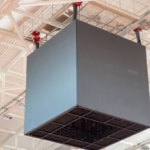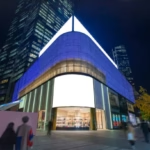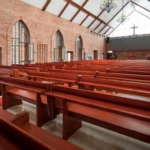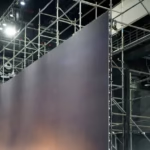Los centros de transporte modernos ya no son simples pasillos. En cambio, son ecosistemas comerciales dinámicos que integran el flujo de pasajeros con sistemas minoristas, publicitarios y de información pública. Los aeropuertos, estaciones de metro y terminales de riel de alta velocidad ahora requieren sistemas de visualización de información LED confiable, visualmente potente y escalable. Estas pantallas sirven no solo como herramientas de comunicación en tiempo real sino también como plataformas de generación de ganancias a través de la publicidad. En Rey D, Entendemos que las pantallas de pantalla LED comercial deben ser más que superficies brillantes. Deben integrarse profundamente con la arquitectura, los sistemas digitales y el flujo operativo de cada ubicación.
Sección 1: La evolución de los centros de tránsito en zonas comerciales
A medida que evoluciona la infraestructura de viaje, también lo hacen las expectativas de los viajeros. Los entornos de tránsito de hoy están diseñados para un movimiento más que eficiente. Cada vez más, estos espacios actúan como extensiones de la vida minorista y comercial urbana. Desde quioscos minoristas hasta patios de comidas, publicidad y orientación digital, los sistemas de visualización LED ancla la infraestructura visual y funcional de los centros de tránsito modernos. El despliegue de pantallas LED comerciales refleja esta evolución. Reúnen el marketing, la información y el diseño para crear una experiencia de pasajero perfecta.
Además, la transición a la señalización digital de alta definición es parte de una tendencia más grande en la infraestructura de la ciudad inteligente. El contenido en tiempo real, las actualizaciones remotas y la programación basada en datos ahora definen cómo se ve un sistema LED efectivo. Los carteles estáticos han dado paso a pantallas dinámicas que adaptan el contenido al tiempo, el flujo de tráfico e incluso las condiciones climáticas. Para los operadores y anunciantes, este cambio ofrece un mejor compromiso y una mejor monetización.
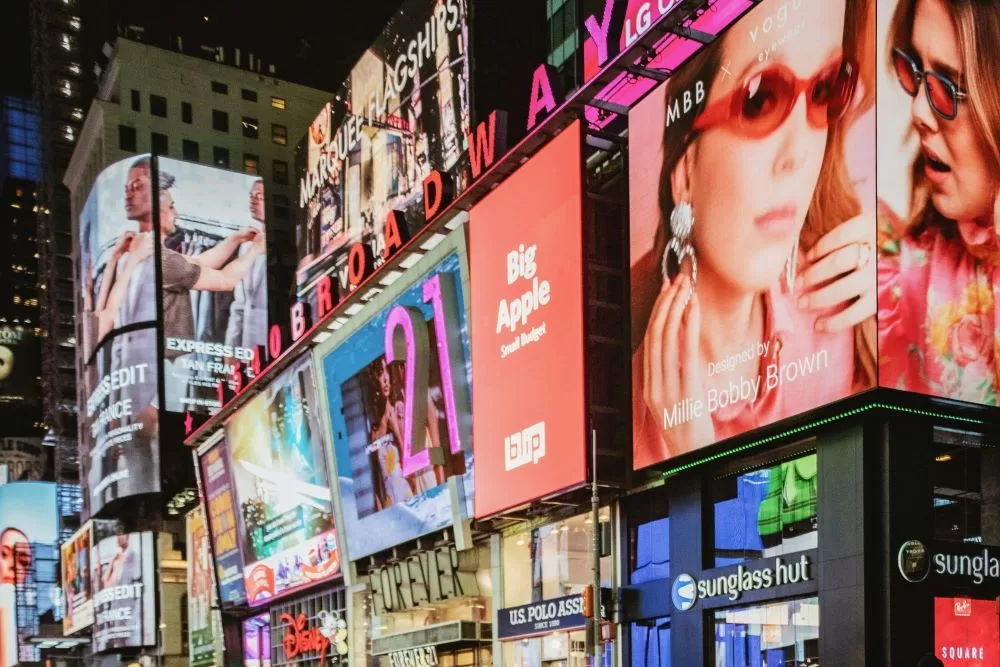
Sección 2: Funciones centrales de los sistemas de visualización LED en los centros de tránsito
Una red de pantalla LED bien diseñada sirve a tres funciones principales: orientación, comunicación y generación de ingresos. Primero, los pasajeros de guía de pantallas LED. En aeropuertos y estaciones de metro, las tablas LED presentan información de la puerta, llegadas de trenes, rutas de transferencia y retrasos. En segundo lugar, estos sistemas comunican anuncios y mensajes de seguridad. Una plataforma en tiempo real reduce la confusión y aumenta la confianza. Finalmente, el potencial comercial de las pantallas digitales no puede ser subestimado. La publicidad en grandes pantallas LED, especialmente en áreas de alto tráfico, comete atención premium.
La versatilidad de la tecnología LED permite la colocación personalizada en cualquier área. Las columnas verticales, las pancartas de techo y las pantallas curvas son cada vez más comunes. Su resolución y actualización de actualización aseguran la legibilidad desde múltiples ángulos y distancias. En tono rimbombante, pantallas de pantalla LED comercial En el transporte, los centros deben adherirse a los estrictos requisitos de tiempo de actividad y rendimiento. El alto brillo, el tratamiento anti-Glare y la carcasa robusta son esenciales para la seguridad y el cumplimiento.
Sección 3: Escenarios de aplicación en entornos de tránsito
En la práctica, las pantallas LED realizan funciones distintas pero integradas dependiendo de la configuración de transporte:
1. Aeropuertos: Los aeropuertos combinan el tráfico peatonal internacional, los tiempos de permanencia altos y las zonas orientadas al consumidor. Por lo tanto, las pantallas LED aquí sirven como pantallas de información de vuelo (FID), paneles publicitarios, instrucciones de reclamo de equipaje y sistemas de alerta de emergencia. En particular, los pasillos y concursos centrales se benefician de pantallas LED comerciales de gran formato que combinan la marca con la navegación.
2. Estaciones de metro: Los entornos subterráneos requieren pantallas con alto contraste y resistencia a la intemperie. Los módulos LED aquí se utilizan para la información del próximo entrenamiento, alertas de gestión de multitudes, anuncios de servicio público y publicidad en tiempo real. La integración de estos en estructuras de pilares o marcos montados en la pared ayuda a preservar el espacio mientras maximiza la visibilidad.
3. Terminales de riel de alta velocidad: Las estaciones ferroviarias modernas de alta velocidad se centran en la puntualidad, la velocidad y la claridad operativa. Los sistemas de visualización LED aquí enfatizan las tareas de vía, los estados de tren y las notificaciones VIP Lounge. Además, estas pantallas a menudo se sincronizan con los sistemas de boletos para personalizar las experiencias de los pasajeros a través de datos de embarque o promociones de fidelización.
En los tres entornos, el sistema de diseño y gestión de contenido (CMS) debe admitir contenido multilingüe y dinámico. La integración perfecta con las redes de datos de tránsito permite actualizaciones en tiempo real y conexiones intermodales.

Sección 4: Requisitos técnicos para sistemas LED orientados a tránsito
La implementación de pantallas LED en los centros de transporte presenta desafíos técnicos específicos. Estos incluyen fluctuaciones de iluminación ambiental, ciclos de operación continuos y diversas distancias de visualización. Para satisfacer estas demandas, D-King enfatiza las siguientes métricas de rendimiento:
Brillo: Las pantallas LED deben ser visibles en entornos terminales brillantes.
Resolución: El tono de píxel fino es crítico para distancias de corta visión en espacios de tránsito confinados.
Calibración de color: La precisión constante del color asegura la fidelidad de la marca y el atractivo estético.
Durabilidad: Las pantallas deben soportar el polvo, la humedad y los impactos físicos.
Integración del sistema: La compatibilidad con las plataformas de datos del aeropuerto o la estación es esencial para la automatización.
Además, nuestras unidades LED modulares permiten una configuración flexible basada en limitaciones arquitectónicas. Ya sea que se trate de una pared de video panorámica o una visualización de columna delgada, el equipo de ingeniería de D-King adapta cada solución para el máximo rendimiento.
Sección 5: Proposición de valor de D-King en soluciones de pantalla de tránsito
D-King se distingue como un proveedor líder de pantallas LED comerciales para la infraestructura de transporte. Nuestro enfoque se centra en tres pilares: personalización, garantía de calidad y apoyo al cliente. Cada proyecto comienza con un análisis profundo del diseño espacial, los patrones de tráfico y los requisitos de contenido. Nuestros ingenieros luego diseñan sistemas LED a medida que cumplen con los estándares internacionales.
Además, el proceso de fabricación de D-King garantiza la durabilidad a largo plazo. Desde marcos anticorrosión hasta componentes de eficiencia energética, construimos pantallas para condiciones del mundo real. Nuestros clientes disfrutan de un soporte técnico completo, incluida la capacitación en instalación y las herramientas de monitoreo remoto.
En particular, D-King admite pedidos a granel para instalaciones a gran escala. Ya sea actualizando una línea de metro completa o construyendo una nueva terminal del aeropuerto, ofrecemos consistencia, velocidad y control de costos. El resultado es un sistema de visualización a prueba de futuro que mejora la experiencia del usuario y las fuentes de ingresos.
Conclusión: Crear espacios de tránsito inteligentes y conectados con pantallas LED
La modernización de los centros de transporte exige sistemas visuales integrados de alto rendimiento. Las pantallas de pantalla LED comercial no son simplemente accesorios; Son fundamentales para la orientación, la marca y la claridad operativa. A medida que la movilidad urbana se acelera, también lo hace la necesidad de soluciones LED adaptables e inteligentes.
Rey D, entregamos sistemas de visualización que fusionan la estética con la funcionalidad. Desde salas de aeropuerto hasta corredores de metro, nuestras pantallas potencian a las autoridades de tránsito para informar, participar y ganar, simultáneamente. En un mundo de ritmo rápido, la claridad y el impacto marcan la diferencia.
CTA: [Póngase en contacto con D-King para soluciones LED personalizadas en los centros de tránsito]


